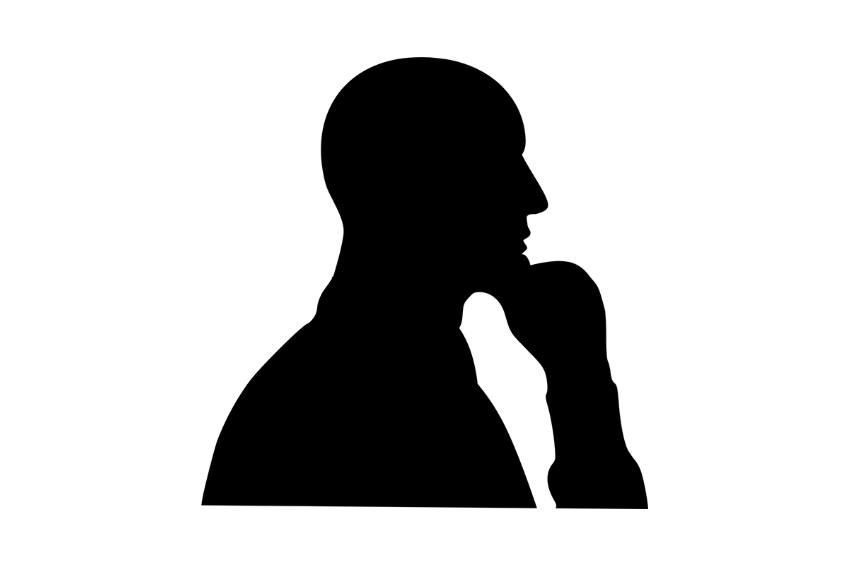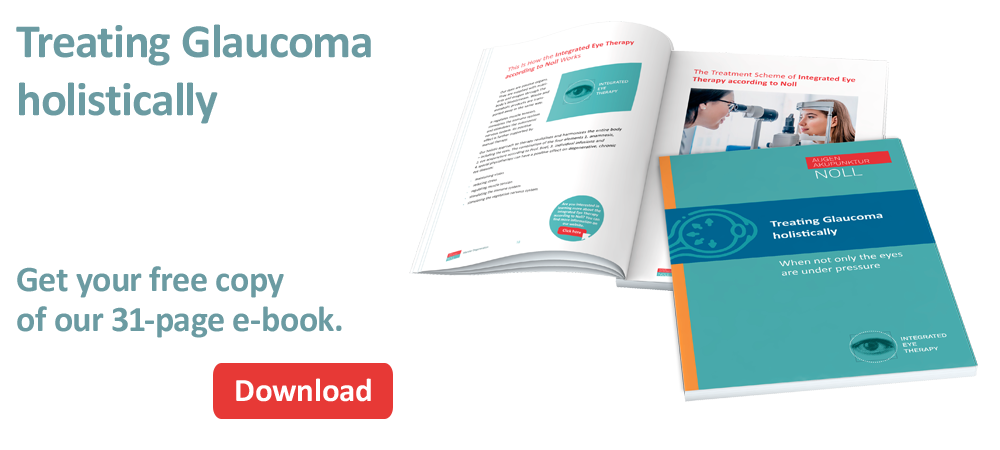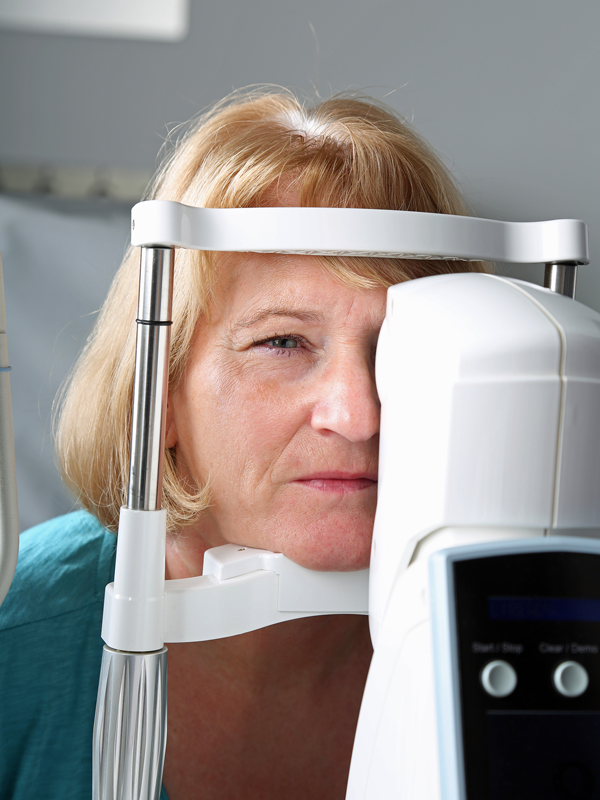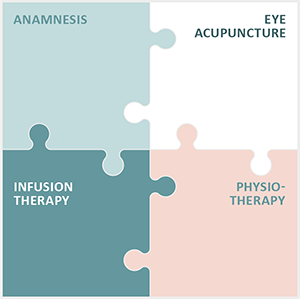The alternative glaucoma treatment

Alternative glaucoma treatments that can complement conventional medical treatment are available for those who are concerned about the issue.
Elevated intraocular pressure is often reduced with the help of eye drops. Nevertheless, it is possible to reduce it naturally.
It should be noted, however, that these measures may not be sufficient in severe cases, but can still contribute to prevention. There is no harm in trying out the following tips.
Here is an overview of a selection of possible alternative glaucoma treatments:
- Diet
- Lifestyle changes
- Eye training
- Detoxification
- Meditation
- Acupuncture
- Alternative approaches of alternative practitioners
Nutrition and intraocular pressure
Diet plays a decisive role in the regulation of intraocular pressure:
Insulin levels
An increase in insulin levels in the blood can increase intraocular pressure. It is therefore advisable to avoid carbohydrates from foods such as potatoes, pasta, bread and rice, as they cause insulin levels to rise rapidly.
Meals should be eaten regularly and it is advisable to avoid snacks between meals.
Antioxidants
Foods rich in antioxidants contribute to eye health. Small amounts of dark berries such as blueberries, blackberries and cranberries should be included in the diet on a daily basis.
However, care should be taken to ensure a moderate intake so as not to increase insulin levels.
Lutein and zeaxanthin
These carotenoids protect the optic nerve and are found in green vegetables such as spinach, broccoli and kale. These foods should be combined with a small amount of high-quality fats as they are necessary for the absorption of these important substances in the body.
Vitamins
Vitamins such as vitamin C (in carrots or peppers), vitamin A and vitamin E are beneficial for healthy eye pressure. Again, they should be combined with fat. Omega-3 fatty acids, which are found in fish, for example, are a good choice.
Avoid nicotine, caffeine and alcohol
High caffeine consumption, smoking and alcohol consumption can have a negative effect on eye pressure. It is advisable to limit coffee consumption to no more than 2-3 cups per day.
Fluid intake
Sufficient fluids, about 2-3 litres of water, should be drunk throughout the day. The body should receive small amounts of fluid continuously instead of drinking large amounts at once.
Green tea can have a positive effect on intraocular pressure as it promotes blood circulation and contains flavonoids. Although it contains caffeine, the amount is less than that of coffee.
Avoid trans fats
Trans fats, which are found in ready meals, fried foods and pastries, should be avoided. This not only promotes eye health, but also the health of the whole body.
Lifestyle and eye pressure
Lifestyle also influences eye pressure:
Exercise and sport
Regular physical activity can influence insulin levels and thus reduce eye pressure. It is advisable to exercise three to five times a week for around 30 minutes, especially endurance sports such as cycling.
Sports that involve a lot of muscle contractions or exercises where the head is tilted downwards should be avoided.
Stress management
Chronic stress can increase eye pressure. It is therefore advisable to avoid stress, be it professional or personal stress.
Even if there is no stress at work, conflicts in your private life or with yourself can act as stress factors.
Eye care
Excessive strain on the eyes, especially when working at a computer screen for long periods, should be avoided. It is important to work in suitable lighting conditions and to give your eyes regular breaks. There are also some exercises that can strengthen the eyes and reduce eye pressure.
Exercises to strengthen the eyes and reduce eye pressure
Some simple exercises can help promote healthy eye pressure:
Blink
Blink as often as possible, every three seconds, for about a minute. This is especially refreshing after long periods of screen time.
Figure-eight line
Draw a large “8” on a piece of paper and attach it to the wall at some distance. Then trace the figure-eight line with your eyes without moving your head to strengthen your eye muscles.
Thumb focus
Hold your outstretched thumb about 10 cm in front of your face and focus your gaze on it for a few seconds. Then swivel your eyes to a point in the distance. Keep switching back and forth between the distances for a few minutes.
Breathing exercise
Stress reduction can be achieved through regular, conscious breathing. Sit upright in a quiet place for 5 minutes or stand up straight and breathe in and out calmly.
Concentrate on your stomach area and, if necessary, place the flat of your hand loosely on your stomach. Ideally, you should increase the time from 5 minutes to a longer period.
Of course, none of the exercises mentioned is the sole remedy for high eye pressure. However, each of them strengthens (eye) health and is therefore always a good start.
Detoxification and waste removal as alternative approaches to glaucoma treatment
Glaucoma, medically known as glaucoma, can be caused, among other things, by an extensive accumulation of waste products in the eye. This build-up process can include toxins such as mercury, according to a 2015 study from the University of California.
The researchers found that the more mercury present in the blood, the higher the risk of glaucoma. At the same time, an increased susceptibility to glaucoma was found with low manganese levels. (Manganese is abundant in foods such as amaranth, oatmeal, pulses and nuts).
To treat or prevent glaucoma, regular cleansing and detoxification measures are required to eliminate waste products and heavy metals from the body, including the eye tissue.
Detailed instructions on how to carry out a purification (ideally once or twice a year) or detoxification can be found here: Purification – but the right way and The holistic detox cure.
Meditation to support glaucoma treatment
Regardless of whether you have already been diagnosed with glaucoma or simply have increased intraocular pressure, it is advisable to remain calm.
Often the term “raised intraocular pressure” can be unsettling as it is often mistakenly equated with the development of glaucoma.
However, as mentioned above, only a very small number of people with high intraocular pressure actually develop glaucoma.
It can be helpful to begin the practice of meditation to not only keep calm, but also to lower intraocular pressure.
A study published in 2014 in the journal Neuro-Ophthalmology & Visual Neuroscience found that meditation can lower intraocular pressure, regardless of whether the participants were experienced meditators or beginners.
Acupuncture as an alternative treatment method
Acupuncture therapy can have a positive effect on the condition of glaucoma, as at least two Chinese studies have shown. In one of these studies from 2011, 39 glaucoma patients underwent acupuncture treatment.
After the treatment, the intraocular pressure was significantly lower than before. This lower pressure was maintained for at least 24 hours.
Source: Liu W et al, Impact of acupuncture on 24 h intraocular pressure of glaucoma. June 2011, Zhongguo zhen jiu = Chinese acupuncture & moxibustion, (Effect of acupuncture on 24 h intraocular pressure in glaucoma)
Another study in 2012 showed that acupuncture can help eliminate liver qi stagnation and promote blood circulation, which achieved positive results especially in glaucoma without elevated intraocular pressure.
Source: Xu H, ZHANG Ren`s experience of treatment on glaucoma with acupuncture, May 2012, Zhongguo zhen jiu = Chinese acupuncture & moxibustion, (ZHANG Ren`s experience in the treatment of glaucoma with acupuncture)
Alternative approaches to glaucoma treatment by alternative practitioners
Alternative practitioners take a holistic approach to the treatment of diseases. They do not view diseases in isolation, but as part of a comprehensive system.
Their diverse treatment concepts can also be used alongside conventional medical therapy.
In order to prevent glaucoma or positively influence its progression, it makes sense to identify risk factors, for example. This requires a comprehensive, holistic approach. From a naturopathic perspective, problems in the (cervical) spine can favour the development of glaucoma, as can a lack of nutrients or vitamins.
Traditional Chinese Medicine (TCM) sees a connection between the eye and the liver function circuit, while ear acupuncture practitioners believe that ear jewellery (eye point/ear acupuncture) can have an influence.
Alternative practitioners also recognise a link between stress and increased intraocular pressure, similar to high blood pressure. On the one hand, stress can have a negative influence on intraocular pressure. On the other hand, the loss of vision, deterioration in quality of life and fear of blindness associated with increased pressure can lead to further stress.
This may explain why relaxation therapies such as autogenic training can reduce intraocular pressure, as stated by the German Ophthalmological Society (DOG).
Other relaxation techniques such as hypnosis can also have a positive effect on intraocular pressure, improve the supply to the optic nerve and thus slow down the progression of the disease – in addition to conventional drop therapy.
In order to improve the eye metabolism, the “detoxification” and excretory functions of the liver, kidneys or lymphatic system can be strengthened. Various detoxification and elimination methods as well as phytotherapy, spagyric or homeopathic remedies are available for this purpose.
All of these methods are just a few examples of the many options available to alternative practitioners. The right choice is made on an individual basis.
Various therapy methods can therefore be used in the treatment of glaucoma, often in combination. Examples of this are:
- Anthroposophic medicine: Anthroposophic medicine is a holistic, complementary healing method based on the ideas of the Austrian philosopher Rudolf Steiner and takes into account the physical, mental and spiritual health of the individual.
- Acupuncture: Acupuncture is a traditional Chinese healing method in which thin needles are inserted into specific points on the skin to promote health and well-being, relieve pain and treat various medical conditions.
- Neural therapy and segmental injections: Neural therapy and segment-targeted injections are medical procedures that use specific injections into nerves or specific segments of the body to relieve pain and treat medical conditions.
- Nutritional therapy: Nutritional therapy is a medical treatment method that focuses on the targeted adjustment of nutrition to improve or treat health conditions.
- Orthomolecular therapy with micronutrients: Micronutrient orthomolecular therapy is a medical practice that focuses on the targeted use of vitamins, minerals and other natural substances to promote health and treat disease by targeting optimal nutrient levels in the body.
- Osteopathy (craniosacral therapy/osteopathy): Osteopathy, including craniosacral therapy, is a manual health discipline that aims to promote the body’s self-healing powers through the mobilisation and manipulation of tissues and joints, particularly in the area of the skull and sacrum.
- Reflex zone therapy on the foot: Reflex zone therapy on the foot is an alternative healing method that assumes that certain areas of the sole of the foot correspond to organs and other parts of the body and that targeted pressure massage or stimulation on the foot can improve the health and well-being of the entire body.
Integrated Eye Therapy according to Noll: A holistic approach to the treatment of eye diseases
Eye Acupuncture Noll is dedicated to the treatment of chronic and degenerative eye diseases with the specially developed Integrated Eye Therapy according to Noll, which comprises four central elements:
- Detailed anamnesis: this basic assessment of the patient’s findings enables us to understand each patient’s specific needs and conditions in detail.
- Eye acupuncture according to Prof Boel: A central element of the therapy based on the individual needs identified in the anamnesis.
- Customised infusions: Tailored to the specific health needs of each patient to achieve optimal results.
- Specialised physiotherapy: Focused on supporting the physical functions of the eye and its surroundings.
Over the past 13 years, the practice has built up a large international patient base and is particularly proud of the many positive feedbacks from patients following treatments. This feedback confirms the value of Integrated Eye Therapy according to Noll as an integral part of the treatment strategies offered to patients.
Complementing alternative glaucoma treatments
In line with the therapy described above, this page offers further insight into alternative glaucoma treatments that can complement conventional medical approaches. These alternative methods aim to reduce intraocular pressure naturally and include
- Dietary changes: Adjusting diet can help to regulate insulin levels and thereby positively influence intraocular pressure.
- Lifestyle changes: Regular exercise and stress management can also play an important role.
- Eye training and meditation: These practices can help reduce intraocular pressure and improve overall well-being.
These integrative approaches offer patients the opportunity to supplement and personalise their glaucoma treatment individually, which can lead to a significant improvement in individual health and quality of life.
By combining these holistic treatment methods, a comprehensive, individually customised therapy can be carried out.





